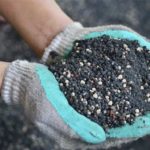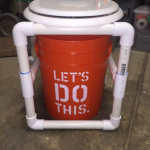Banana Fungus Threatens to Kill Global Supplies

One of the biggest risks to our global food supply is a lack of seed diversity. Huge, multi-national agricultural companies have found ways to coerce farmers around the world to use only their seed products. This has led to a limitation of varieties of plants that are available for distribution to markets and stores. The selling point for this practice is that crops are more uniform and visually-appealing. The downside is that if something happens to one of these crops, global food supplies can be disrupted.
At the present time, nearly 95% of all bananas that are grown and sold in the world come from a single variety, the Cavendish. These bananas are seedless, not nearly as sweet as other hundreds of other varieties that used to grow in farms around the world, and are very durable. This makes them easy to ship, control ripening and ensure that they remain fresh by the time they reach store shelves.
However, the downside is that if something terrible happens to this variety of crop, the entire global supply can be decimated. The result would be a huge reduction in the availability of bananas and prices would skyrocket. Well, guess what? That is exactly what is happening.
Panama Disease

A fungus, known as Panama disease or banana wilt is what wiped out earlier crops of bananas that led to the introduction of the Cavendish in the mid-20th century. The Cavendish was immune to the fungus, and consequently, it is considered to be the variety of choice to ensure that supplies kept flowing throughout the world. However, the Panama disease has mutated, and a resurgence of fungi have reached areas where most banana growing takes place.
This new and improved fungus is now targeting Cavendish bananas, and it is decimating crops. It is expected that it will make its way into Latin America, where most of the world’s bananas are grown, in the not too distant future. The consequences can be catastrophic. Not only will banana supplies be at risk, but a huge portion of the agricultural economy in small countries can be destroyed as well.
How the Fungus Works

The fungus gets to bananas at almost every stage of development. It is found in the soil where it attacks seedlings. Its spores reproduce and attack other bananas as well as get piggy-backed on crops that come into other farms as well as each other after harvesting. The bottom line is that this disease is a huge problem that officials are struggling to cope with.
What makes matters worse is that the newest strain of the Panama disease, called Race 4, is also attacking other species of bananas as well. This makes finding suitable options to replace the Cavendish difficult. At the end of the day, if this fungus makes its way to farms in Latin America, it will take up to a decade to eradicate the current problem and introduce a new strain of bananas that are immune. The cycle will continue, and after a few decades, the fungus will find a way to mutate once again.
Lack of Seed Diversity

Seed diversity is something that we don’t often hear about. However, it is essential for protecting farmer’s crops and global food supplies. Mixing different varieties minimizes risk because if one gets impacted by a devastating outbreak, drought or insect invasion, other species that are heartier will not be affected. Consequently, supply disruptions are minimized and we still get food on our table.
However, the multi-billion dollar commercial seed production industry doesn’t like seed diversity because their products don’t gain exclusive prominence in farms across the globe. There is so much money that flows from these companies into the coffers of governmental agencies and politicians that regulations that would otherwise protect global food supplies are almost non-existent. So, we end up with a limited variety of seeds that are susceptible to destruction as well as genetically-modified foods that still have little-understood health impacts.
What is happening with bananas now is a sign of things to come. It only takes one bug, one virus or one fungus to eradicate an entire crop. Imagine what would happen if more than one outbreak occurred or if these microorganisms were to mutate and impact other crops. We could be on the brink of a famine that would be almost impossible to prevent or manage. Forget global warming, forget about drought. Our next famine could come from the greed of big businesses that have governments in their back pockets.
So, savor your next banana, because if current strains are devastated, it can take years before we get to sink our teeth into this nutritious and tasty source of nutrients.













